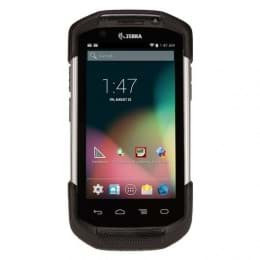The importance of automatic identification in merchandise management
To optimize the performance of your business's internal operations, it is essential to manage the flow of goods efficiently.
To identify, locate and track each item throughout the logistics chain, different tools or functionalities are used, known as merchandise identification systems.
These systems may vary in the way they operate, but they all have something in common: they must be integrated with warehouse management software (WMS) that gathers the information and makes it available to all operators.
With a merchandise identification system, you will be able to manage your inventory efficiently and safely, as it allows you to locate each item in real time, assign the most convenient route for its collection, generate and print the corresponding label and optimize packaging processes. and shipping preparation.
You will be able to save time, money and resources, and improve your customer satisfaction.
Goods identification systems
- Barcode
These are marks that contain a unique code of letters and numbers that are attached to the product packaging for later reading. With a simple barcode reader scan you can access all the information on each product.
This is the most used product identification method in the industry due to the great benefits it offers, especially if it is improved with the proper application.
2.RFID
RFID consists of the terminal emitting a radio frequency wave that communicates with a microchip to obtain information on its content.
The main advantage over previous merchandise identification methods is that it does not require visual contact to work. In addition, the information storage capacity of the chip is much greater than that of scannable codes.
- QR or BIDI code
These labels are read with a laser sensor that recognizes their geometric pattern, instead of using letters and numbers.
The main difference between the QR code and the BIDI code is that the former is in the public domain and free, while the latter is privately owned and has a cost. The QR code is more universal and easier to use, but the BIDI code has more security.
The choice will depend on the frequency of shipments, the quality of the reading systems, the type of product or the available resources.
- PDA
Mobile computers (PDAs) are versatile tools that can be applied to different warehouse operations. For example, they can function as a scanner for the codes mentioned above, to monitor the entry and exit times of merchandise or to follow picking routes.
It all depends on the model of personal assistance device being used. In addition, they serve as a means of internal communication, which is why they are so common in large logistics warehouses.
- Voice identification
This system allows the operator to communicate with an intelligent warehouse management system that provides information through voice commands.
It is a very accurate system that can be applied to other tasks, but it requires an advanced WMS that has an integrated modular voice system. This system is also called voice picking.
- Virtual reality
Augmented reality allows warehouse employees to access any route and stock data whenever they need it. This data is displayed as a hologram on the technological device (glasses, PDA or mobile phone) and guides the employee through all stages of the supply chain.









